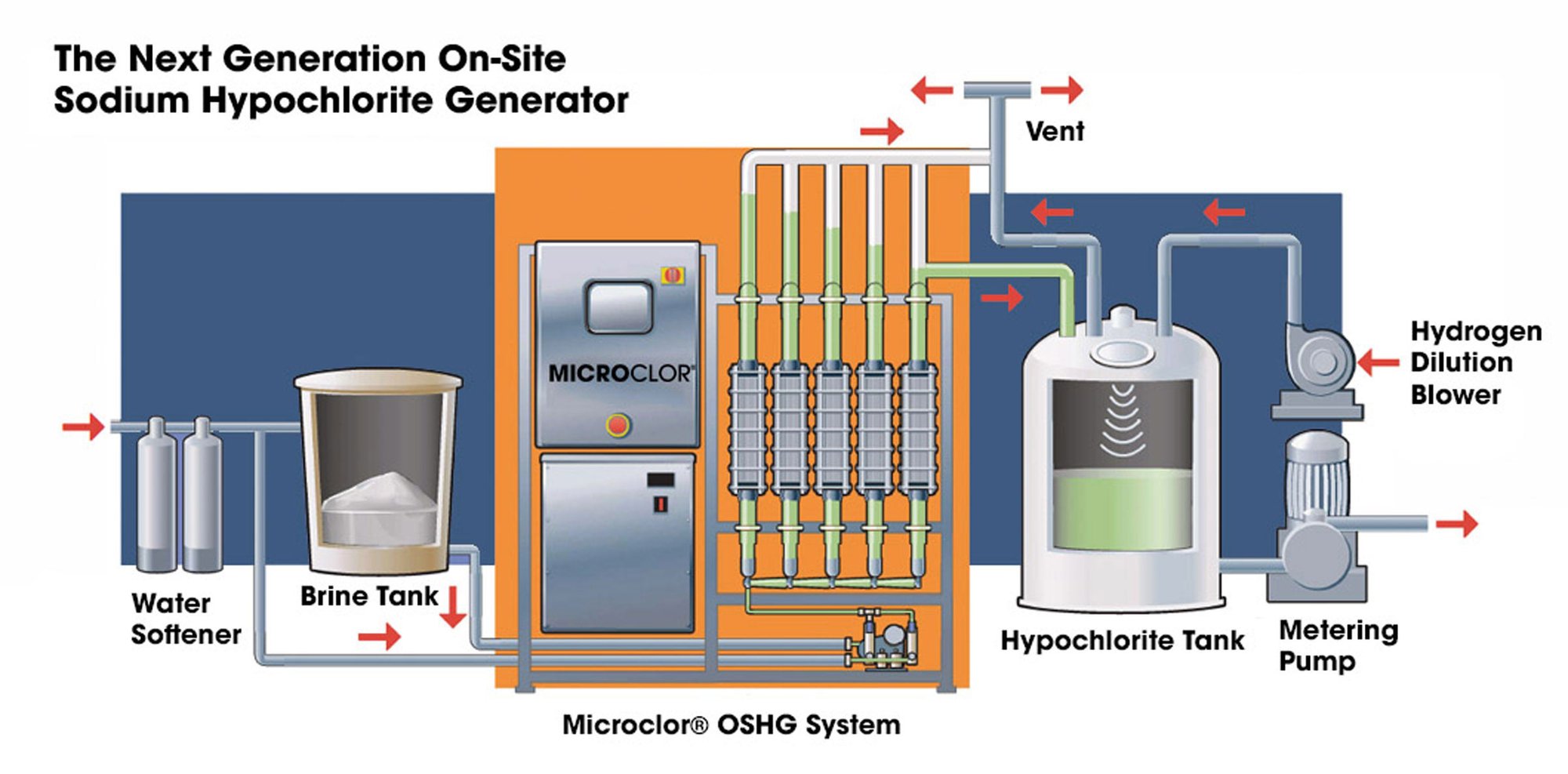On-Site Hypochlorite Generation vs Chlorine Gas: Weighing the Benefits and Risks
In water treatment and disinfection, the choice of method significantly impacts safety, environmental sustainability, and operational efficiency. Traditionally, chlorine gas has been a common disinfectant; however, its associated risks have prompted many facilities to transition to On-Site Hypochlorite Generation (OSHG) systems.
Safety Concerns of Chlorine Gas
Chlorine gas, while effective as a disinfectant, presents several safety hazards:
- Toxicity: Exposure to chlorine gas can cause respiratory issues, eye irritation, and skin burns. High concentrations may lead to severe health complications or fatalities.
- Leakage Risks: Accidental releases during transportation, storage, or handling can result in hazardous exposures. For instance, a chemical plant fire in Georgia released chlorine gas, leading to evacuations and health concerns.
- Regulatory Compliance: The handling and storage of chlorine gas are subject to stringent regulations, necessitating comprehensive risk management plans and regular safety audits.
Benefits of On-Site Hypochlorite Generation (OSHG)
OSHG systems offer several advantages over chlorine gas:
- Enhanced Safety: By producing a dilute sodium hypochlorite solution on-demand, OSHG systems eliminate the need to store and handle hazardous chlorine gas, significantly reducing safety risks.
- Environmental Sustainability: OSHG systems generate fewer harmful byproducts and minimize chlorine residuals, leading to a reduced environmental footprint.
- Operational Reliability: Producing hypochlorite on-site ensures a consistent supply, mitigating risks associated with supply chain disruptions inherent in chlorine gas procurement.
Industry Shift from Chlorine Gas to OSHG
The water treatment industry is increasingly adopting OSHG systems due to the safety and operational benefits they offer. Notable examples of this transition include:
- Nashville: The city's water services implemented OSHG to enhance safety and reliability in their disinfection processes.
- San Diego: Transitioning to OSHG allowed for improved operational control and reduced chemical handling risks.
- San Antonio: The adoption of OSHG systems contributed to increased safety measures and environmental compliance.
- Hickory: The city's water treatment facilities experienced enhanced safety and efficiency after implementing OSHG technology.

These case studies highlight a growing trend toward safer and more sustainable disinfection methods in the water treatment sector.
Conclusion
The inherent risks associated with chlorine gas have led many water treatment facilities to adopt On-Site Hypochlorite Generation systems. OSHG offers enhanced safety, environmental benefits, and operational reliability, making it a preferred choice for modern water disinfection needs.
Learn more about OSHG:



